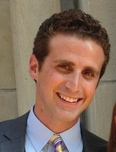
Introducing Michael Macaluso
This week's blog posting is from Michael Macaluso. I meet Michael this summer at the CEE summer conference (this conference is a fantastic place to meet people and make connections that keep you thinking about important issues.) In this posting he talks about some of the ways his YA class discusses diversity. Thanks Michael.

I don't have that problem with the current YAL class I teach as part of Michigan State’s Children’s and Young Adult Literature program (under the guidance of Dr. Laura Apol). The course, Issues of Difference and Diversity in Young Adult and Multicultural Literature, is not methods based even though it is housed in a College of Education. When I first started teaching the course, I was panicked: how would I approach such a class if I did not have to focus on literary analysis (as expected in an English class) or the pedagogical relevance and application of the literature we read (as expected in an educational methods course)? Now, however, I find the opportunity liberating, and it has made me a born-again fan of YA literature!
The class reads culturally diverse literature as a vehicle to build an awareness and understanding of issues connected to difference, identity, and multiculturalism so that the future teachers enrolled in the course might become more critically and culturally conscious in their own classrooms one day. We talk about stereotypes, privilege and oppression, identities, and single and counter stories. Quite simply, Kirkland helps us to read with a critical multicultural approach – for the ways in which literature challenges us to think differently and for the way it challenges and affirms – in fact illuminates – contemporary conversations. Nothing is taken for granted as we read with and against books and media.

| This is a constant in the course, and it is the richness of YAL that allows these conversations to happen. While reading American Born Chinese, we read a recent CNN article about Asian Americans and the model minority myth. With Alexie’s Absolutely True Diary, we talk about contemporary mascot controversies and culturally appropriated Halloween costumes (and here) and clothing and jewelry (a topic that became even more complex and relevant this year when the skier lauded for coming out was likewise criticized for his Halloween costume!). This iterative reading of word and world has become such an essential staple that students bring in examples of “contemporary commentaries” each week, where they engage with these timely topics across social media and news articles. One final project of the course requires them not just to read some conversation but to become a participant in it, positioning themselves as critical producers of knowledge – nascent social activists or agents of change – rather than mere consumers of culture. This way, they question the world around them and tell a story with their digital footprints – and it is YAL that helps them to do that! |
Megan Borgeson
Since taking this course, I now push myself to consider how characters are portrayed in novels, and whether or not these portrayals could be problematic or stereotypical. When I read the book Openly Straight through the lens of this class, it caused me to make connections with my own previous assumptions of a group of people and how the book challenged these expectations. While reading, I had to ensure that I was actively thinking about how this character was being portrayed, and whether or not these depictions were stereotypical or showing just a single story. For example, in the novel a group of straight students decide if they can make fun of a gay person for something not involving that person’s sexuality. This debate is a sign of privilege, and even when they are “accepted,” gay people are not truly considered to be on the same level as heterosexual people. Themes of privilege and oppression are ones frequently discussed in our class, and have me constantly questioning the way I read novels and the world around me. As a future teacher, it is important to be open minded and to understand that I will have students who are often underrepresented in literature taught in schools. This course has taught me that children should be reading books that challenge stereotypes and single stories, in order to get them to take a new perspective and gain a deeper understanding of the world and people around them.
Katie Nicholls
One book in particular, The Absolutely True Diary of a Part-Time Indian, has made me rethink the long-standing stereotype I have had of Native Americans based off of my own experiences growing up in a largely Native American community. The real-life experiences in this novel granted me a new perspective of an Indian population much different than the population of my own community. It is often easy to assume a stereotype is true for an entire group of people if you have never been exposed to anything different. However, the reality of the racist elements present in this book force the reader to become aware: aware of the stereotypes that exist, aware that the stereotypes may not fit everyone, and aware of their own prejudice thoughts – perhaps one of the most important roles that diversity plays in young adult literature. Exposure to new perspectives from these books and class discussions have not only taught me how to read both with and against the literature we are presented, but have also showed me the multiple ways in which a person’s own life experiences can influence their interpretation of what they read. Thus my interpretation of Absolutely True Diary could be vastly different from someone who has never been exposed to Native Americans, or vise versa, who has grown up on an Indian Reservation themselves. Through class discussions I learn of those valuable perspectives and the different ways in which the literature we read could be interpreted.



 RSS Feed
RSS Feed